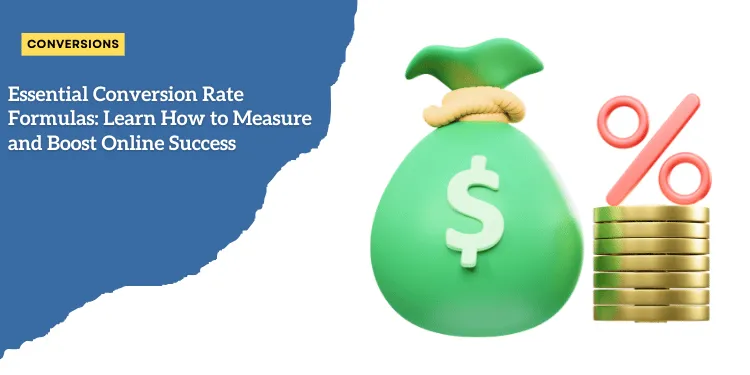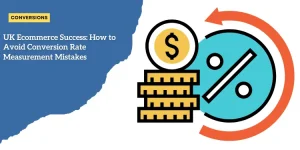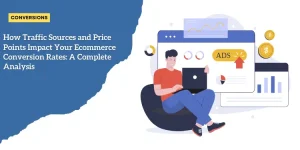Essential Conversion Rate Formulas: Learn How to Measure and Boost Online Success

Anúncios
Understanding conversion rates is crucial to maximizing your online success.
Conversion rate measures the percentage of visitors who complete a desired action on your website.
Anúncios
What is a Conversion Rate?
A conversion rate represents how well your site convinces visitors to complete a specific goal.
It’s usually calculated as follows:
[ \text{Conversion Rate (%)} = \left( \frac{\text{Number of Conversions}}{\text{Number of Visitors}} \right) \times 100 ]
Anúncios
For instance, if 1,000 people visit your site and 50 make a purchase, your conversion rate is 5%.

Different Types of Conversion Goals
Conversions aren’t limited to sales; they encompass a range of objectives such as:
- 📝 Lead Generation: Filling out contact forms or signing up for newsletters.
- 📈 Engagement: Downloading PDFs, clicking on a specific link, or watching videos.
- 🔄 Micro Conversions: Smaller steps leading toward a primary goal like adding items to a cart or creating an account.
Importance of Conversion Rates as Key Performance Indicators
Conversion rates are vital for gauging the effectiveness of your marketing strategies and website performance.
They provide insight into:
- 🌐 User Experience: Higher conversion rates often indicate a user-friendly website.
- 📊 Marketing Effectiveness: Better conversion rates signal successful marketing campaigns.
- 💰 Revenue Impact: More conversions typically mean higher revenue and growth potential.
Improving conversion rates involves refining numerous aspects of your website and marketing approach.
By understanding, measuring, and optimizing these rates, you can enhance overall business performance.
Essential Conversion Rate Formulas
Basic Conversion Rate Formula and Its Variations
Conversion rates are calculated to understand how well your website or marketing efforts convert visitors into customers or leads.
The basic formula is:
Conversion Rate (%) = (Conversions / Total Visitors) x 100
This simple calculation helps you determine the effectiveness of your web pages, ads, or campaigns.
There are variations based on different goals and context.
For example, to measure the download rate for free content:
Download Rate (%) = (Number of Downloads / Total Visitors) x 100
Micro conversions can also be tracked using similar formulas for actions like email sign-ups or video views.
Sales Conversion Rate Calculation with Practical Examples
For e-commerce, the sales conversion rate is crucial. If you had 1,000 visitors and made 20 sales, the sales conversion rate is:
Sales Conversion Rate (%) = (Number of Sales / Total Visitors) x 100
Sales Conversion Rate (%) = (20 / 1,000) x 100 = 2%
A 2% sales conversion rate means that 2 out of every 100 visitors made a purchase.
Lead Conversion and Click-Through Rate Formulas Explained
Leads are valuable for services and B2B businesses.
If you generated 50 leads from 1,000 visitors, the lead conversion rate would be:
Lead Conversion Rate (%) = (Number of Leads / Total Visitors) x 100
Lead Conversion Rate (%) = (50 / 1,000) x 100 = 5%
Click-through rates (CTRs) are also important for email campaigns and online ads:
CTR (%) = (Number of Clicks / Number of Impressions) x 100
If an ad got 10 clicks from 500 impressions, the CTR is:
CTR (%) = (10 / 500) x 100 = 2%
By understanding these formulas, you accurately measure your marketing effectiveness and identify opportunities for growth.
Analyzing and interpreting these metrics will guide you in optimizing your strategies and improving your performance.
Factors Affecting Conversion Rates
Impact of Device Type and Website Responsiveness
Different device types can significantly affect conversion rates.
With the rise in mobile device usage, ensuring that your website is mobile-friendly is essential. Mobile users expect a seamless experience, including fast load times and easy navigation.
If your site performs poorly on mobile, you risk losing a considerable portion of potential conversions.
Meanwhile, desktop users may expect a more robust and detailed viewing experience, so responsive design is crucial.
It ensures a consistent look and functionality across all devices, reducing barriers to conversion.
Influence of Advertising Channels and Marketing Strategies
The choice of advertising channels and marketing strategies also plays a pivotal role in influencing conversion rates.
Various channels, such as social media, search engine ads, and email marketing, can attract users with different levels of intent.
For instance, a well-targeted Google Ad may convert higher due to the user’s immediate need.
Contrarily, social media ads can introduce your brand to potential customers who might convert at a later stage.
Effective targeting and aligned messaging across these channels are crucial.
Aligning ad content with user intent and ensuring that the landing pages reflect this intent can significantly enhance conversion rates.
Role of Seasonality and Market Trends in Conversion Performance
Seasonality and broader market trends can cause fluctuations in conversion rates.
Holidays, such as Black Friday or Cyber Monday, often see spikes in online shopping due to special promotions and a heightened consumer buying mood.
Similarly, product-specific trends can influence conversion rates based on their relevance at certain times of the year.
Understanding these patterns helps in planning marketing efforts accordingly. It allows businesses to capitalize on peak times and prepare for quieter periods.
Keeping an eye on market trends and adapting to these shifts ensures that your strategies remain relevant and your conversion rates stay optimized.
Transitioning from understanding the nuances in factors affecting conversion rates, we’ll delve into the tools and metrics needed to track these conversions efficiently.
Analytics and Data Collection
Using Google Analytics to Track Conversion Metrics
Google Analytics is an essential tool for understanding user behavior and tracking conversion metrics on your website.
By integrating this free tool into your site, you can gather vital data on how visitors interact with your content.
Google Analytics provides a wealth of information that can help you identify areas for improvement and optimize your online strategies.
Key metrics to focus on include:
-
👥 New or Unique Visitor Conversion: Distinguish between conversions from first-time and returning visitors. This helps in tailoring strategies to attract new visitors while keeping loyal customers engaged.
-
🔗 Sources of Incoming Traffic: Identify whether visitors are coming through search engines, referral sites, or direct traffic. This can highlight which channels are most effective and justify the allocation of marketing budgets.
-
📉 Bounce Rate: Measure the percentage of visitors who leave your site after viewing only one page. A high bounce rate may indicate issues with your landing pages or the relevance of your content.
-
🚪 Exit Pages: Determine which pages users frequently exit your site from. This can help you pinpoint problematic areas of your site that need optimization.
-
⏳ Average Session Duration: Assess how long visitors stay on your site. Longer session durations typically indicate more engaging and valuable content.
Key Metrics to Monitor
Focusing on several essential metrics can provide actionable insights to improve your website’s performance.
Let’s explore a few:
- Bounce Rate: This metric shows the percentage of single-page visits. A high bounce rate indicates visitors aren’t finding what they’re looking for, prompting an immediate exit. Addressing issues like page load speed, content relevance, and user experience can help reduce the bounce rate.
- Exit Pages: Track which pages people leave your site from most frequently. High exit rates on significant landing pages might signal that the content or layout needs improvement.
- Conversion Rate: This is the percentage of visitors who complete a desired action, such as making a purchase or filling out a form. Monitoring this metric helps you evaluate the effectiveness of your website and marketing efforts.
- Session Duration and Pages per Session: Longer durations and more pages per session often suggest that visitors find your site engaging and valuable.
How to Interpret Conversion Data for Decision Making
Interpreting your conversion data effectively is crucial for making informed business decisions.
Here are some steps:
- Identify Trends and Patterns: Regularly review your data to spot trends in user behavior. This includes identifying peak times for traffic and conversions, popular content, and common drop-off points.
- Segment Your Data: Break down your data into meaningful segments, such as by traffic source, device type, geographic location, or demographic information. This helps you understand which groups are performing well and which need attention.
- A/B Testing: Implement A/B testing for various elements on your site, such as headlines, images, calls-to-action, and layouts. Use Google Analytics to track the performance of these tests and determine the most effective variations.
- Set Goals: Define clear, measurable goals within Google Analytics. Whether it’s increasing sales, generating more leads, or improving engagement, having specific targets helps focus your optimization efforts.
- Reflect on Performance against Benchmarks: Compare your metrics against industry benchmarks or historical data to gauge how well your site is performing. This contextual understanding can guide your strategic decisions.
As you gather and interpret data, keep adjusting and refining your approach.
Continuous monitoring and optimization are key to staying on top of performance and ensuring sustainable business growth.
By utilizing Google Analytics effectively, you can gain deep insights into user behavior, identify areas for improvement, and make data-driven decisions to enhance your conversion rates.
Optimizing Landing Pages
Critical Elements of High-Converting Landing Pages
Creating a high-converting landing page involves focusing on several critical elements.
The primary goal is to provide a seamless user experience that encourages visitors to complete the desired action.
To achieve this, consider the following:
-
💡 Clear Value Proposition: Make sure the visitor immediately understands what you offer and how it benefits them.
-
📝 Strong Headlines and Subheadings: Craft engaging headlines that capture attention and subheadings that explain the benefits.
-
✍️ Concise and Persuasive Copy: Use clear, persuasive language. Avoid jargon and get straight to the point.
Importance of Professional Design and Trust Signals
Professional design and trust signals significantly affect users’ perceptions, helping build credibility and trust.
Here’s how to implement them:
-
🎨 Professional Design: Ensure your landing page looks polished. Poor design can turn visitors away. Use high-quality images. Avoid pixelated visuals, but balance quality to ensure fast loading.
-
🔒 Trust Signals: Include trust indicators like customer reviews, security badges, and professional certifications. These elements reassure visitors of your site’s reliability.
Balancing Content, Imagery, and Calls-to-Action
An effective landing page strikes the right balance between content, imagery, and calls-to-action (CTAs):
| Element | Description |
|---|---|
| 📋 Balanced Content | Keep the content concise yet informative. Focus on key product features and benefits to avoid overwhelming the visitor. |
| 📸 Compelling Imagery | Use high-quality images that showcase your product or service clearly. Avoid cluttering the page with too many visuals that can distract visitors. |
| 🔘 Effective CTAs | Ensure your Calls to Action (CTAs) are clear, compelling, and limited in number. Position them strategically to maximize conversions without confusing the visitor. |
By focusing on these elements, you can significantly enhance your landing page’s ability to convert visitors into customers.
Advertising and Traffic Quality
Aligning Ad Content with Landing Pages
Crafting ads and aligning them with your landing pages is crucial for maximizing conversions.
Your ad content should meticulously match the message and visuals on your landing page.
Misleading ads can result in high bounce rates and wasted ad spend.
To achieve better alignment:
-
🔄 Consistency: Ensure product descriptions, images, and value propositions in your ads are mirrored on the landing page.
-
🎯 Targeted Messaging: Tailor your ads to audience segments and make sure the landing pages they lead to are equally specific.
-
🔑 Optimized Keywords: Use relevant keywords in both ads and landing pages to improve search engine rankings and user relevance.
Regularly review the performance of your ads and their corresponding landing pages to identify mismatches and areas for improvement.
Targeting Optimization for Better Quality Traffic
Quality traffic is more likely to convert, so focusing on targeting optimization can make a substantial difference.
-
👥 Audience Segmentation: Use demographic, geographic, and behavior data to create detailed customer profiles. This will help target your ads to the most relevant audience.
-
📱 Platform Selection: Different platforms cater to different user bases. Analyze which platforms bring in the highest converting traffic and adjust your ad spend accordingly.
-
⏰ Ad Scheduling: Use insights from analytics to run ads during peak times when your target audience is most active.
Continuously refine your targeting strategies by reviewing ad performance data and make adjustments to improve traffic quality.
A/B Testing Strategies for Ad Performance
A/B testing is an effective way to determine which ad variations perform best.
By comparing the performance of two versions of an ad, you can identify what resonates most with your audience.
-
🧪 Elements to Test: Headlines, images, copy, and call-to-action (CTA) buttons should all be tested to discover which combinations result in higher engagement and conversions.
-
📊 Data Analysis: Use tools like Google Ads and Facebook Ads Manager to analyze the results. Track metrics such as click-through rates (CTR), bounce rates, and conversion rates to measure effectiveness.
-
🔄 Iterative Improvements: Based on the insights gained, make data-driven changes to your ads. Implement the best-performing elements and continue testing new variations.
Regular A/B testing and optimization ensure your ads stay relevant and compelling.
As we conclude this chapter, remember that understanding your audience and continuous optimization of your advertising strategies are fundamental in driving quality traffic and maximizing conversions.
Trust Building Elements
Implementing Customer Reviews and Social Proof
Customer reviews are fundamental for engendering trust and credibility in your online business.
They provide potential customers with insights into other users’ experiences, helping to alleviate any doubts they may have about purchasing from you.
Positive reviews and testimonials create a sense of reliability and trustworthiness. Encouraging your customers to leave reviews can be as simple as requesting feedback via email after purchase or offering a small incentive for their time.
Leveraging social proof—such as influencer endorsements, user-generated content, or displaying the number of purchases—is another effective tactic.
It signifies that others have found value in your product or service, which can tip the scales in convincing new customers to proceed.
Utilizing Trust Badges and Security Certifications
Trust badges and security certifications are small graphic symbols placed on your website to signify safety and credibility.
These can include SSL badges, which assure visitors that their data is secure, and verified payment method logos.
Additionally, obtaining certifications from recognized third parties, like Trusted Shops Trustmark, further instills confidence in potential customers, assuring them of your legitimacy and commitment to their safety.
Prominently displaying these trust signals at key points in the purchasing process—particularly on landing pages, checkout pages, and in the footer of your website—can significantly reduce concerns about online fraud and increase conversion rates.
Creating Compelling Product Information and Benefits
Product descriptions should do more than list features—they need to tell a story that connects with the customer’s needs or desires.
Highlight not just the qualities of the product, but also the broad benefits and potential positive impacts on the user’s life.
Imagery plays a crucial role here. Use high-quality, accurate images that show the product in use.
Videos and interactive content can also enhance understanding and engagement. The content should be clear, concise, and free of jargon, making it accessible to a wide audience.
With these trust-building tactics implemented, focusing on user experience and design will further support conversion efforts.






